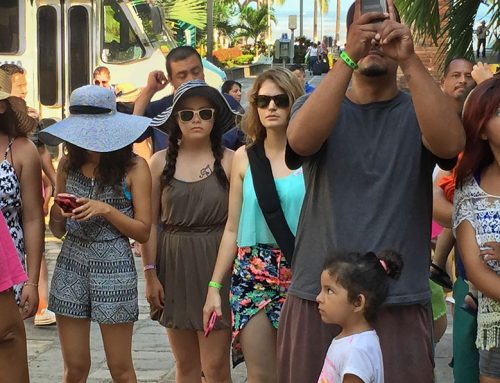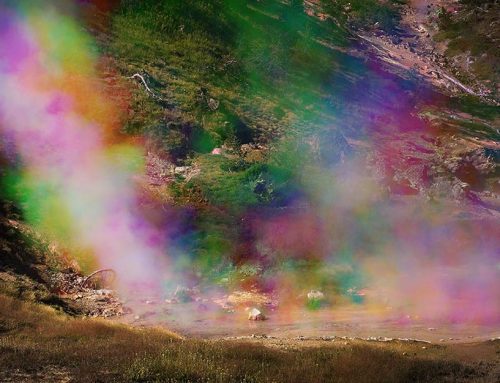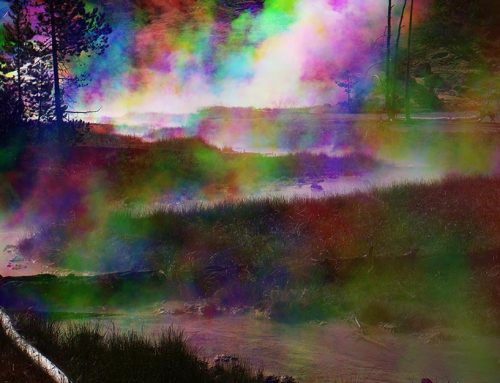These photographs were made several years ago on a trip to Yellowstone National Park. The tri-color photographs are inspired by the work of Charles Swedlund, one of my instructors at the University of Southern Illinois at Carbondale, where I studied from 1980 – 1982. He created a series of magnificent dye transfer photographs, shot with a 8×10 view camera and black and white color separation negatives, that were so powerful I can vividly recall them thirty three years later. The tri-color process is one of the oldest color processes, dating back to the 1800s. In order to create the finished color photograph, a series of three black and white negatives are exposed, each with a primary color filter placed in front of the lens. Each negative then becomes a black and white rendering of the red, green, and blue colors in the scene. Through the dye transfer process the full color print is then achieved. The unique quality of the process derives from the fact that when the three separation negatives are exposed, every thing in the scene that does not move is rendered naturally. However, if any movement occurs between the exposures, that misregistration will be rendered in the color of the filter in front of the lens. I used this technique when I made the photograph of Union Station that is in the St. Louis gallery on the web site. That photograph was made with a 4×5 camera onto a single sheet of color transparency film with three separate exposures. The Yellowstone photographs here were made with a 35mm digital SLR on a tripod without filtration. With three separate exposures, the effect can be accomplished in photoshop by switching the color channels. If anyone is interested in trying these techniques with either film or digital, contact me and I can give you specifics.





